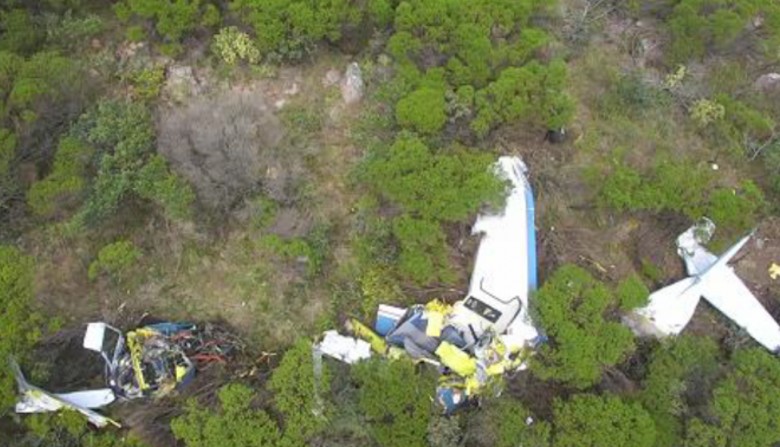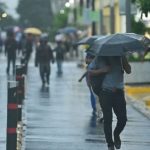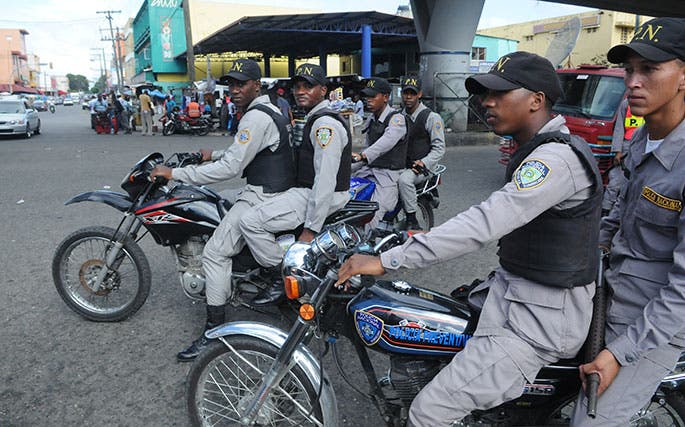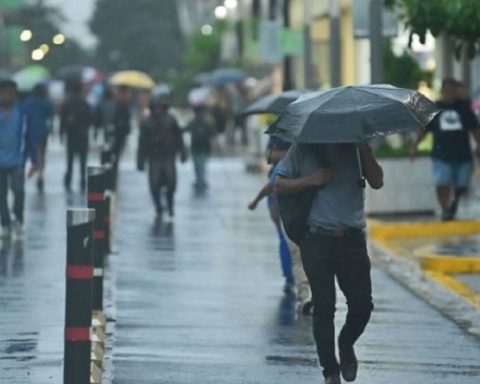The final report of the Aviation Accidents and Incidents Investigation Commission (CIACIA) indicated that the accident of the Argentine Piper PA 24 aircraft that took place on the afternoon of August 22, 2021 at the top of the Sierra de las Ánimas was the result of piloting failure.
The plane departed that same day from the San Fernando International Airport in the province of Buenos Aires (Argentina) and was destined for the Laguna del Sauce International Airport (SULS), where it had to pick up two passengers. However, around 12:45 p.m. that day, it hit the formation, which caused the death of the two pilots who were flying over it.
According to the document presented by CIACIA and disseminated by Correo de Punta del Este, the error occurred during the piloting, where the pilot “demonstrated several times the loss of situational awareness, before and after taking off.”
the beginning of the flight
The pilot signed the flight plan as established, including details among which stand out: autonomy of 4:30 h; flight time of 1:30 hours; the planned route, which was direct to Martín García and then to Laguna del Sauce, with the Carrasco airport as alternate, and flying under visual flight rules (VFR), declared speed of 130 knots.
“There is no certainty of the meteorological information that the pilot handled for the planning of the flight. After taking off, the pilot turned the bow of the plane towards the island of Martín García and from there to Montevideo. The aircraft was first under the jurisdiction of the Colonia Traffic Control Center and then Carrasco. When flying over Montevideo at an altitude of 3,000 feet, the pilot requested to fly directly to Laguna del Sauce,” the document states.
moment of impact
The cell phone application used on the flight records that at 12:35 p.m. the aircraft was 35 nautical miles (nm) from SUSLS and was flying at 2.5 nm per minute. At 12:41 the pilot reported 20 nm from the point and asked to descend to an altitude where he would “find the high ground covered in clouds.” Finally, the plane crashed 15 from the airport, at 12:45 p.m.
“The aircraft was configured with gear and flaps down at a distance from the airport greater than 15 nautical miles. Analysis of the in-flight decision-making process presents a degraded decision-making chain,” the report states.
“Having started the flight in visual conditions, since these meteorological conditions later changed to instrument flight rules (IFR), considering that the aircraft was not enabled for IFR flights, and added to the action of continuing the flight, demonstrates what has been said in the previous paragraph. But, considering that the aircraft was configured to land, and that a visual descent is requested without the possibility of seeing the ground, having to cross a layer of clouds to visualize it, it is due to the conditions that caused the fatal accident. It is understood that the actions carried out indicate an inadequate assessment of the weather conditions ”, he explains.
“The details listed in this factor make the human factor the trigger for the accident,” he says.
The refusal from Montevideo
When the pilot asked to fly directly to Laguna del Sauce, the control tower answered him negatively because “visibility and ceilings were quite marginal at that place.” In turn, Control Montevideo had a failure in its radar that led to visual plans not being authorized in the area.
Due to the altitude of the flight and the defects in the traffic control system using radars, it was not possible to have a complete radar video that showed the development of the flight, therefore the radar position was not available in the moments prior to the accident. .
When the aircraft was going over San Ramón, the plane received authorization to go to SULS. The Laguna del Sauce tower instructed it to make the approach to runway 26 as well as for the barometric adjustment and the prevailing wind. Shortly after, the pilot said he was 20 nm from the destination and asked to drop to 1000 feet of altitude, which was authorized.
Moments later, the plane crashed into the ground, near the top of Sierra de las Ánimas. The impact zone is a rocky area with an irregular shape and relief and about 300 meters high. The ship was destroyed and dismembered as it slid across the uneven ground, dispersing the fragments. Most of the aircraft was found divided into four pieces linked by command cables from the flight controls.
The pilot and passenger
The document indicates that the pilot’s experience was much higher than that of his companion, which could have had a negative impact on the flight.
“The pilot, compared to the companion, had 60% more flight hours, had more types of aircraft flown, had received adaptation to PA24 and was authorized by the owner of the aircraft to fly it. These differences generated an unfavorable gradient between the pilot and the companion, which may have contributed to the fact that the workload before and during the flight fell solely on the pilot,” he says.
“Since the beginning of the flight, the pilot was distracted and/or with a loss of situational awareness, proof of this was the action of incorrectly reading the taxiing instructions from San Fernando Surface, later San Fernando Torre gives him the option of two exits , the pilot chooses one and after a while changes it”, he adds.
The conclusions of the document include that the pilot was “duly qualified and authorized to operate the aircraft, with his current aeronautical medical certification, in addition to having 60% more than the passenger and also the pilot.
In addition, it indicates that although the maintenance of the aircraft had a valid airworthiness certificate, it was not authorized to carry out flights under IFR conditions.
The document is emphatic that “the pilot demonstrated several times the loss of situational awareness, before and after takeoff” and that “traffic control informed the pilot of adverse weather conditions for the visual flight at the destination and alternate airports , and it is understood that before San José there was cloudiness that prevented having visual contact with the terrain”.
It also indicates that traffic control denied the pilot a direct flight to SULS due to the adverse conditions at SUMU and for not having reliable radar. However, the pilot continued the flight out of VFR conditions, in addition to carrying out a controlled flight against the line of elevations present on his route.


















